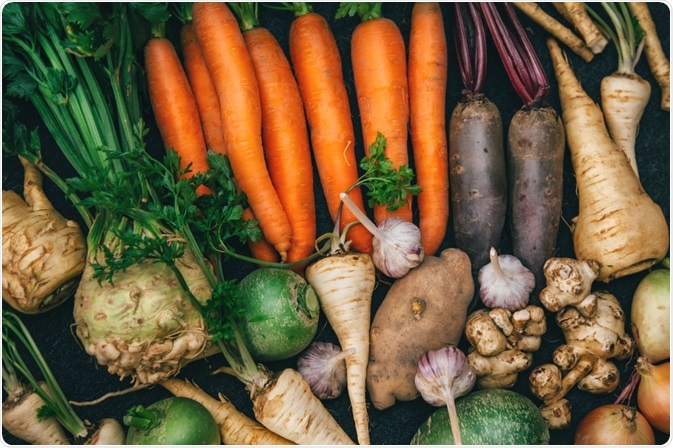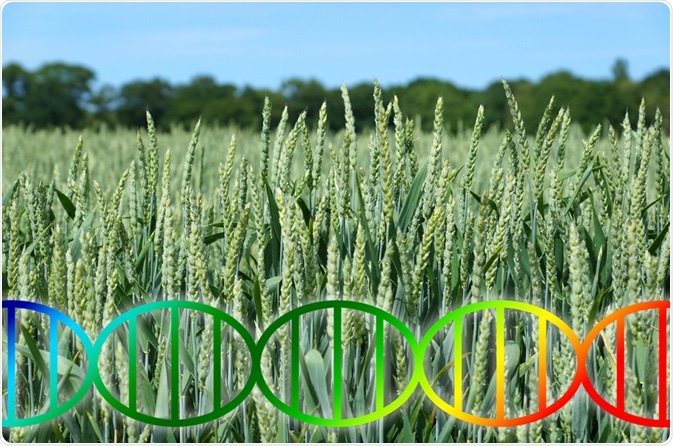With a rapidly growing world population combined with an increasing proportion of malnutrition, food science has turned to molecular techniques to address the environmental, economic, and societal challenges of food security.

Image Credit: ulrich22/Shutterstock.com
Food security in an era of climate change
The availability, quality, and sustainability of crops face significant challenges due to the advent of global climate change. Many effects are currently occurring such as changing weather patterns as well as the severity of climatic events are affecting crop production. Despite such environmental pressure, there is an increasing demand for food in abundance and diversity.
What the golden age of molecular science means for plant health
To address the emerging concerns for food security, several solutions have been developed to lessen the pressure on crop losses. Many responses rely on increasing crop production despite increasingly limited land availability as well as growing environmental stressors. However, a more promising solution is the improvement of plant health using molecular techniques.
The progress of molecular science in recent decades has allowed the development of tools that target genes with key functional roles. More specifically, the modification of genes and genetic components has allowed geneticists to engineer plants and crops that are more resilient to environmental changes, that can grow faster, have shorter lifespans, or have different nutritional value.
Such progress has considerable potential for enhancing plant health, with consequent improvements for food security and socio-economic stability.
The divisive nature of gene modifications in plants
Despite such potential, many nations around the globe remain in opposition to the genetic modification of plants. Many believe that manipulating genetic material goes against religious and cultural values. Genetically modified crops have therefore sparked much debate despite similar practices occurring since the dawn of human existence, including the process of artificial selection and domestication.
This controversy was discussed succinctly in an article by Macnaghten and Habets from September 2019. They highlighted the key facets on opposing sides and that many advantages can be derived from the debate itself. However, views on either side remain largely entrenched with little progress and rare dialogues between opposing sides.
The article further described how such stasis is hindering the potential progress of genetic techniques as well as limiting the opportunity for reaching a consensus between opposing factions. Despite these setbacks, recent efforts have demonstrated the capacity of genetic modifications to improve plant health.
Applying molecular tools in agriculture
A recent review by Ahmar et al. published earlier this year revealed the extensive range of molecular techniques now recognized to be used for modifying genetic material in plants. In particular, the use of CRISPR/Cas9 provides an affordable and accurate technique to target key genes. Such advantages have led to the popularization of this method, making it the preferred technique in understanding, and boosting plant health.
Some of the results of using CRISPR/Cas9 include changing key life-history characteristics such as speed breeding, which relies on shortening the breeding cycle of plants, also providing a unique opportunity to document changes across generations. Other applications of this method have led to plants that are less susceptible to thermal stress and others that are resistant to herbicides and diseases.
These genetic modifications provide stronger and more resilient plants that can sustain greater abiotic stress. Despite concerns of hybridization, strains are generally sterilized to avoid any effects on other species. Such developments have many direct applications for the modern and future world, especially with the advent of changing environmental conditions and increased societal requirements.
Implications and limitations
The use of molecular tools in food research is still burgeoning with many prospects aside from boosting plant health including improving the quality of the crop itself. For instance, crops have been developed that have reduced sugars and less polyunsaturated fats as well as increased fragrance, which may appeal to consumers.
Other consumer-driven changes involve the production of seedless fruit, termed parthenocarpy, whereas producers may also benefit as crops have been made that have earlier flowering and more bush resulting in an earlier harvest.
The use of molecular tools therefore not only focuses on developing new crop varieties with high yield, resistance to biotic and abiotic stressors but also improving nutritional value and appeal to consumers. However, although many crops are being developed successfully, many limitations remain in the application of molecular tools in food science.
In particular, the limitations of using CRISPR/Cas9 was highlighted in an article published in May 2019, which highlighted several concerns of this technique. Some concerns address the technique itself, as a key challenge appears to be the absence of a powerful cell delivery method into reproductive cells, which remains to be developed.
The also authors discussed the issues associated with the lack of an internationally accepted regulatory framework for gene editing and how the use of this technique remains to be standardized internationally.

Image Credit: Axel Bueckert/Shutterstock.com
Looking forward - the future of molecular plant health
The emergence of CRISPR-based gene editing techniques has generated many promising solutions to address the growing environmental and societal pressure on food security. Despite the controversy surrounding gene editing, the application of molecular tools in food science will provide stronger crop varieties as well as more diverse crops that can widely benefit the rapidly growing human population.
Such technological advances hold considerable potential with promising solutions for contemporary and future food security.
References
- Ahmar, S. et al. (2020) A Revolution toward Gene-Editing Technology and Its Application to Crop Improvement. International Journal of Molecular Sciences, 21, pp. 56-65. doi:10.3390/ijms21165665
- Franz, E., Gras, L. M. and Dallman, T. (2016) ‘Significance of whole-genome sequencing for surveillance, source attribution and microbial risk assessment of foodborne pathogens’, Current Opinion in Food Science, 8, pp. 74–79. doi: 10.1016/j.cofs.2016.04.004.
- Jagadeesan, B. et al. (2019) ‘The use of next-generation sequencing for improving food safety: Translation into practice’, Food Microbiology, 79, pp. 96–115. doi: 10.1016/j.fm.2018.11.005.
- Macnaghten, P. and Habets, M. G. J. L. (2020) ‘Breaking the impasse: Towards a forward-looking governance framework for gene editing with plants’, PLANTS, PEOPLE, PLANET. John Wiley & Sons, Ltd, 2(4), pp. 353–365. doi: https://doi.org/10.1002/ppp3.10107.
- Mao, Y. et al. (2019) ‘Gene editing in plants: progress and challenges’, National Science Review, 6(3), pp. 421–437. doi: 10.1093/nsr/nwz005.
- Ueta, R. et al. (2017) ‘Rapid breeding of parthenocarpic tomato plants using CRISPR/Cas9’, Scientific Reports, 7(1), p. 507. doi: 10.1038/s41598-017-00501-4.
Further Reading
Last Updated: Nov 26, 2020